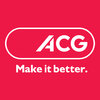Maintenance Head
10+ Maintenance Head Interview Questions and Answers
Asked in Parmax Pharma

Q. What are the different types of maintenance, including preventive, predictive, breakdown, corrective, and condition-based maintenance?
Maintenance types include preventive, predictive, breakdown, corrective, and condition-based, each serving unique operational needs.
Preventive Maintenance: Scheduled tasks to prevent failures, e.g., regular oil changes in machinery.
Predictive Maintenance: Uses data analysis to predict failures, e.g., vibration analysis in rotating equipment.
Breakdown Maintenance: Reactive approach to fix equipment after failure, e.g., repairing a machine that has stopped working.
Corrective Ma...read more
Asked in Parmax Pharma

Q. What is the capacity of the compressor in cubic feet per minute (CFM)?
The compressor's capacity in CFM indicates its airflow rate, crucial for efficient operation in various applications.
CFM stands for Cubic Feet per Minute, a measure of airflow.
A higher CFM indicates a more powerful compressor, suitable for larger tasks.
For example, a small air compressor may have a capacity of 2-5 CFM, while industrial models can exceed 100 CFM.
Understanding CFM helps in selecting the right compressor for specific needs, like pneumatic tools or HVAC systems.
Asked in Parmax Pharma

Q. What are the hardness and viscosity characteristics of ETP sludges?
ETP sludges exhibit varying hardness and viscosity, impacting their handling and treatment processes.
Hardness of ETP sludges can range from soft to hard, depending on the composition and treatment process.
Viscosity is influenced by the concentration of solids; higher solids lead to increased viscosity.
For example, sludges with high organic content may be softer and less viscous compared to those with high inorganic content.
The hardness can affect the dewatering process; harde...read more

Asked in Calderys India Refractories

Q. What are the different types of motors, and how do you select a motor based on environmental conditions?
Types of motors include AC motors, DC motors, and servo motors. Selection is based on factors like environmental conditions, power requirements, and control precision.
Types of motors: AC motors, DC motors, servo motors
Selection based on environmental conditions, power requirements, control precision
Examples: AC motor for continuous operation, DC motor for variable speed applications, servo motor for precise control

Asked in The Acetech Machinery Components

Q. How would you do Preventive Maintenance effectively?
To effectively do Preventive Maintenance, create a schedule, use checklists, train staff, track maintenance history, and prioritize tasks.
Create a detailed schedule for regular maintenance tasks
Use checklists to ensure all necessary maintenance steps are completed
Train staff on proper maintenance procedures and safety protocols
Track maintenance history to identify trends and potential issues
Prioritize tasks based on criticality and impact on operations

Asked in Raymond Lifestyle Limited

Q. How do you manage manpower?
Manpower can be managed effectively by proper planning, training, communication, and motivation.
Create a detailed schedule for tasks and assignments
Provide regular training and development opportunities for skill enhancement
Maintain open communication channels for feedback and issue resolution
Recognize and reward employees for their hard work and achievements
Maintenance Head Jobs



Asked in Parmax Pharma

Q. What is the steam efficiency of a boiler?
Steam efficiency of a boiler measures how effectively it converts fuel into steam energy.
Steam efficiency is calculated as the ratio of useful steam output to the energy input from fuel.
A high steam efficiency indicates better fuel utilization and lower operational costs.
For example, a boiler with 85% steam efficiency converts 85% of the fuel energy into steam.
Factors affecting steam efficiency include boiler design, maintenance, and operating conditions.
Regular maintenance c...read more

Asked in Continental

Q. Tell me about the whole process of the maintenance role.
The maintenance role involves ensuring the proper functioning of equipment and facilities through regular inspections, repairs, and replacements.
Regularly inspect equipment and facilities to identify any issues or potential problems
Perform routine maintenance tasks such as cleaning, lubricating, and adjusting equipment
Repair or replace faulty equipment or parts
Maintain accurate records of maintenance activities and schedules
Ensure compliance with safety regulations and standa...read more
Share interview questions and help millions of jobseekers 🌟


Asked in Vikram Tea

Q. What is problem solving?
Problem solving is the process of finding solutions to difficult or complex issues.
Identifying the root cause of the problem
Generating possible solutions
Evaluating and selecting the best solution
Implementing the chosen solution
Monitoring and adjusting the solution as needed

Asked in Kotak Mahindra Bank

Q. Estimate power consumption for plants and optimize fuel consumption.
Estimate power consumption for plants by analyzing historical data and implementing energy-saving measures to optimize fuel consumption.
Analyze historical power consumption data to identify trends and patterns
Implement energy-saving measures such as upgrading equipment, improving insulation, and optimizing processes
Utilize energy management systems to monitor and control power usage in real-time
Consider alternative energy sources such as solar or wind power to reduce reliance...read more

Asked in ACG Worldwide

Q. No of manforce handling and total work experience
We have a team of 10 skilled technicians with an average work experience of 5 years.
We have a team of 10 technicians handling maintenance work.
All of them are skilled and experienced in their respective fields.
The average work experience of the team is 5 years.
We have a mix of young and experienced technicians to ensure a balance of energy and expertise.

Asked in Continental

Q. Describe the role of a daily routine.
The daily routine plays a crucial role in the smooth functioning of maintenance operations.
The daily routine helps in organizing and prioritizing tasks.
It ensures that preventive maintenance tasks are carried out regularly.
It helps in identifying and addressing any immediate maintenance issues.
The routine includes tasks like equipment inspections, cleaning, and lubrication.
It involves scheduling and assigning work to maintenance staff.
The routine also includes documenting mai...read more

Asked in Kotak Mahindra Bank

Q. How do you schedule preventive maintenance?
Preventive maintenance can be scheduled by creating a maintenance plan, prioritizing tasks, setting up a schedule, and utilizing a CMMS system.
Create a maintenance plan outlining all equipment and systems that require preventive maintenance
Prioritize tasks based on criticality and frequency of maintenance required
Set up a schedule for preventive maintenance activities, taking into account production downtime and resource availability
Utilize a Computerized Maintenance Manageme...read more

Asked in The Acetech Machinery Components

Q. How would you control breakdowns?
To control breakdowns, I would implement a preventive maintenance program, conduct regular inspections, train staff on proper equipment usage, and keep spare parts inventory.
Implement a preventive maintenance program to regularly check and maintain equipment
Conduct regular inspections to identify potential issues before they lead to breakdowns
Train staff on proper equipment usage and maintenance procedures to prevent misuse and damage
Keep a well-stocked inventory of spare par...read more
Asked in Parmax Pharma

Q. Different types of maintenance mechanical
Mechanical maintenance includes various strategies to ensure equipment reliability and performance.
Preventive Maintenance: Regularly scheduled inspections and servicing to prevent breakdowns (e.g., oil changes in vehicles).
Corrective Maintenance: Repairs made after a failure occurs (e.g., fixing a broken conveyor belt).
Predictive Maintenance: Using data and analytics to predict when maintenance should be performed (e.g., vibration analysis in motors).
Condition-Based Maintenan...read more

Asked in Siemens Energy

Q. Regular maintenance implementations
Regular maintenance implementations are crucial for ensuring the smooth operation of equipment and preventing costly breakdowns.
Regularly schedule maintenance tasks such as equipment inspections, lubrication, and calibration.
Keep detailed records of maintenance activities and equipment performance to identify trends and potential issues.
Train maintenance staff on proper procedures and best practices to ensure efficient and effective maintenance.
Utilize predictive maintenance ...read more

Asked in Calderys India Refractories

Q. Load and heat chart of MCC
Load and heat chart of MCC is a graphical representation of the load and heat dissipation of Motor Control Center.
Load and heat chart helps in monitoring the electrical load on the MCC and the corresponding heat generated.
It assists in determining if the MCC is operating within its specified load and temperature limits.
The chart can be used for preventive maintenance by identifying potential overheating issues before they cause equipment failure.

Asked in Haier Appliances India

Q. 4 cylinder firing order
The firing order of a 4-cylinder engine determines the sequence in which each cylinder fires.
The firing order is specific to each engine model and can be found in the vehicle's service manual.
The firing order is usually indicated by a numerical sequence, such as 1-3-4-2 or 1-2-4-3.
The firing order is important for proper engine performance and timing.
Incorrect firing order can lead to engine misfires and poor performance.
Asked in DEV CARRIER & MINERALS

Q. What is the firing order for a 6-cylinder engine?
The firing order of a 6-cylinder engine determines the sequence in which each cylinder fires.
The firing order is specific to each engine model and can be found in the vehicle's service manual.
It is important to follow the correct firing order to ensure proper engine performance and avoid damage.
An example of a common firing order for a 6-cylinder engine is 1-5-3-6-2-4.
Interview Questions of Similar Designations
Interview Experiences of Popular Companies








Reviews
Interviews
Salaries
Users

















